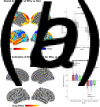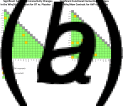Null results of oxytocin and vasopressin administration on mentalizing in a large fMRI sample: evidence from a randomized controlled trial
- PMID: 37310308
- PMCID: PMC10123837
- DOI: 10.1017/S0033291721004104
Null results of oxytocin and vasopressin administration on mentalizing in a large fMRI sample: evidence from a randomized controlled trial
Abstract
Background: Although potential links between oxytocin (OT), vasopressin (AVP), and social cognition are well-grounded theoretically, most studies have included all male samples, and few have demonstrated consistent effects of either neuropeptide on mentalizing (i.e. understanding the mental states of others). To understand the potential of either neuropeptide as a pharmacological treatment for individuals with impairments in social cognition, it is important to demonstrate the beneficial effects of OT and AVP on mentalizing in healthy individuals.
Methods: In the present randomized, double-blind, placebo-controlled study (n = 186) of healthy individuals, we examined the effects of OT and AVP administration on behavioral responses and neural activity in response to a mentalizing task.
Results: Relative to placebo, neither drug showed an effect on task reaction time or accuracy, nor on whole-brain neural activation or functional connectivity observed within brain networks associated with mentalizing. Exploratory analyses included several variables previously shown to moderate OT's effects on social processes (e.g., self-reported empathy, alexithymia) but resulted in no significant interaction effects.
Conclusions: Results add to a growing literature demonstrating that intranasal administration of OT and AVP may have a more limited effect on social cognition, at both the behavioral and neural level, than initially assumed. Randomized controlled trial registrations: ClinicalTrials.gov; NCT02393443; NCT02393456; NCT02394054.
Keywords: fMRI; functional connectivity; mentalizing; oxytocin; theory of mind; vasopressin.
Conflict of interest statement
None.
Figures




References
-
- Baron-Cohen, S., Wheelwright, S., Hill, J., Raste, Y., & Plumb, I. (2001). The “Reading the Mind in the Eyes” test revised version: A study with normal adults, and adults with Asperger syndrome or high-functioning autism. Journal of Child Psychology and Psychiatry, 42(2), 241–251. doi: 10.1111/1469-7610.00715 - DOI - PubMed
-
- Bartz, J. A., Zaki, J., Ochsner, K. N., Bolger, N., Kolevzon, A., Ludwig, N., … Taylor, S. E. (2010). Effects of oxytocin on recollections of maternal care and closeness. Proceedings of the National Academy of Sciences of the USA, 107(50), 21371–21375. doi: 10.1073/pnas.1012669107 - DOI - PMC - PubMed
-
- Benjamini, Y., & Hochberg, Y. (1995). Controlling the false discovery rate: A practical and powerful approach to multiple testing. Journal of the Royal Statistical Society, 57(1), 289–300. doi: 10.2307/2346101 - DOI

